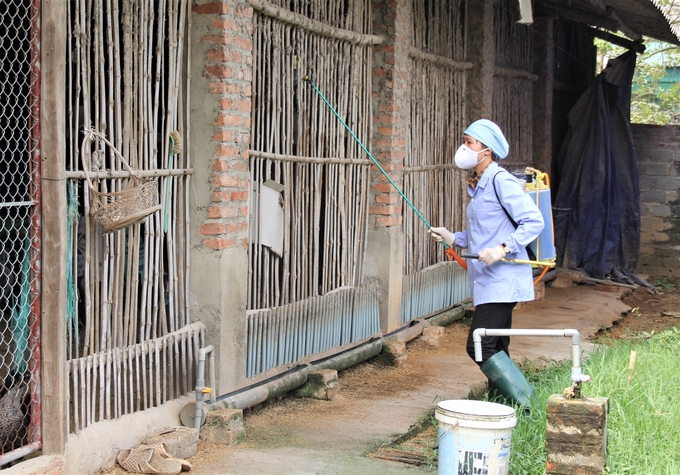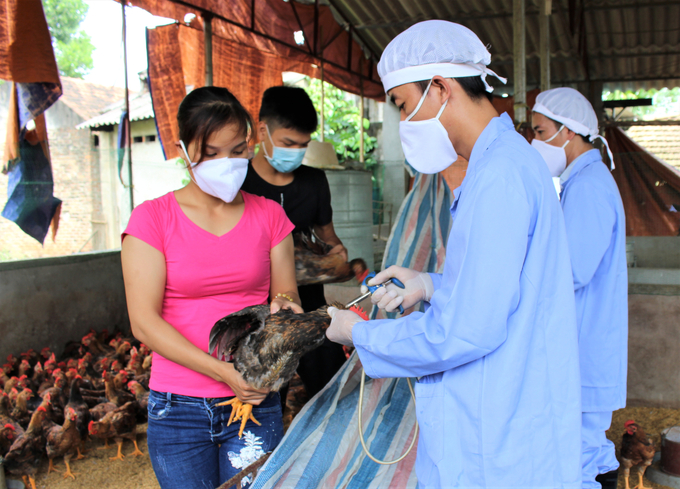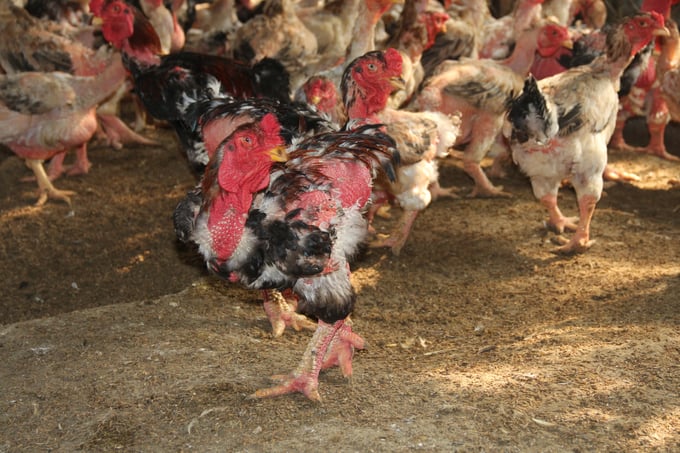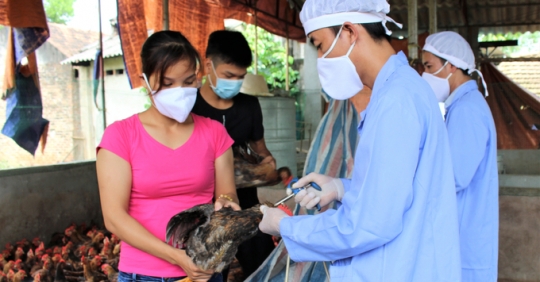
The risk of infection, generation and spread of avian influenza in the city. Hanoi in the near future will be very high. Picture: Pham Hieu.
Ensure that over 80% of the entire poultry flock is vaccinated
According to the Ministry of Agriculture and Rural Development, one human death from the A/H5N1 avian influenza virus was recently recorded in Cambodia’s Prey Veng province. Hence the City People’s Committee. Hanoi believes that the risk of contagion, generation and spread of bird flu in the city is very high in the near future.
The reason is that Hanoi has a large herd of poultry in the area while there are many small livestock farms. On the other hand, changes in the weather complicate developments, create favorable conditions for the development of pathogens and reduce the resistance of poultry.
In addition, inter-place transportation of poultry and poultry products has increased to service the New Year festivals, while small-scale slaughter accounts for the bulk.
Many poultry flocks have expired immunity but have not been revaccinated. In addition, the low prices of poultry and poultry eggs and at the same time the high prices of animal feed in modern times, the efficiency of animal production, the good sale of farmers and the lack of diligence, disease prevention and control also affect a possible cause of the spread the bird flu.
Accordingly, in order to strengthen the measures to prevent and control bird flu in the city, the City People’s Committee. Hanoi called on people’s committees of surrounding counties and cities to follow guidance from the Ministry of Agriculture and Rural Development and organize the synchronous implementation of bird flu prevention and control solutions in accordance with regulations.
In particular, the organization of bird flu vaccination to prevent poultry diseases in the region to ensure that the rate of over 80% of the total flock at the time of injection and the regular review and supplementation of vaccination for new flocks of poultry, not vaccinated as required.

City. Hanoi requires the organization of bird flu vaccination to ensure a rate of over 80% of the total flock at the time of vaccination. Picture: Pham Hieu.
Also city. Hanoi requires the organization to tightly control transportation to prevent poultry and poultry products from carrying pathogens to the site to spread the disease. To intensify checks and controls in the areas of animal husbandry, slaughter and disease prevention and control, as well as to consistently prevent violations and treat them in accordance with the law.
The people’s committees of districts and cities must also strengthen proactive epidemic surveillance and focus on places with large poultry populations and high-risk areas for early detection, warning and treatment of cases where the epidemic is hidden and not actively declared.
Hanoi City People’s Committee applied 389 City Steering Committee, Ministry of Industry and Commerce, City Public Security; City Market Management Department; The City Customs Bureau organizes, based on the functions and tasks of the unit, to prevent, promptly detect and strictly deal with the cases of illegal transportation of poultry and poultry products in the city’s border area, and to deal with them strictly in accordance with the law.
Preventing the illegal import of poultry and poultry products, preventing the sale on the market of unquarantined poultry and poultry products of unknown origin. In particular, it is necessary to treat the cases of violations strictly in accordance with the provisions of the law …
Maintaining the operation of interdisciplinary animal quarantine control posts
According to the Hanoi Department of Livestock and Veterinary Medicine, Hanoi is home to a large poultry herd of about 38.5 million animals.
Currently, bird flu is essentially under control, but the risk of an outbreak is very high as livestock in Hanoi is still small.
The transportation of animals and animal products from the provinces and cities to Hanoi is enormous. In some places, local authorities have not paid enough attention to the work of vaccination, disease prevention and control …
Ministry of Agriculture and Rural Development of the city. Hanoi said the unit will coordinate with relevant units, departments and branches to inspect and deal with disease prevention and control violations. Quarantine and control of slaughter of animals and animal products from the provinces and cities to Hanoi.
In addition, maintaining the proper operation of interdisciplinary animal quarantine control centers and quarantine stations, guidance, reminders, monitoring and assessment of the disease situation, monitoring of virus circulation, post-vaccination monitoring.
On the other hand, promote solutions to prevent and control bird flu in the media so that farmers are aware and take preventive measures according to the regulations.
In addition, in order to protect farm animals, communities must also be fully and timely vaccinated against avian influenza, while promptly notifying the authorities and taking appropriate measures at the livestock farm.

City. Hanoi said local authorities in some places have not paid enough attention to vaccination and disease prevention and control. Picture: Pham Hieu.
Ministry of Agriculture and Rural Development of the city. Hanoi has directed the sub-department of animal husbandry and veterinary medicine to guide, inspect and monitor disease prevention and control in accordance with regulations, and has directed functional departments and specialized agencies at district level to assign officials and staff. Veterinarians are closely monitoring the epidemic situation at the facility to ensure timely detection and reporting.
At the same time, coordinate with local authorities and relevant departments and agencies to inspect, request and guide the organization and implementation of epidemic prevention and control measures, and prepare enough materials and chemicals to be ready to meet the requirements of epidemic prevention and control to regulations…
According to the Ministry of Livestock (Ministry of Agriculture and Rural Development), the country’s poultry population is currently about 523.6 million head, of which over 420 million chickens (80%), waterfowl over 103 million (80%) (20%). At present, the development of avian influenza is very complicated, the risk of outbreaks of the disease is high, since the majority of small livestock farms do not meet the requirements of veterinary hygiene and disease safety, and poultry has not been vaccinated. In addition, avian influenza viruses (A/H5 virus strains including: H5N1, H5N6, H5N8, …) circulated at a relatively high rate (about 6%) in many places.
Domestic trade, transport and consumption of poultry and poultry products also increased sharply in the last months of 2022 and early 2023, and small-scale slaughtering remained very popular. There are currently over 22,000 small slaughterhouses nationwide. Illegal importation of poultry and poultry products also takes place in the frontier provinces.Extreme weather conditions, floods and cold spells reduce livestock resistance and create conditions for the development of pathogens.

